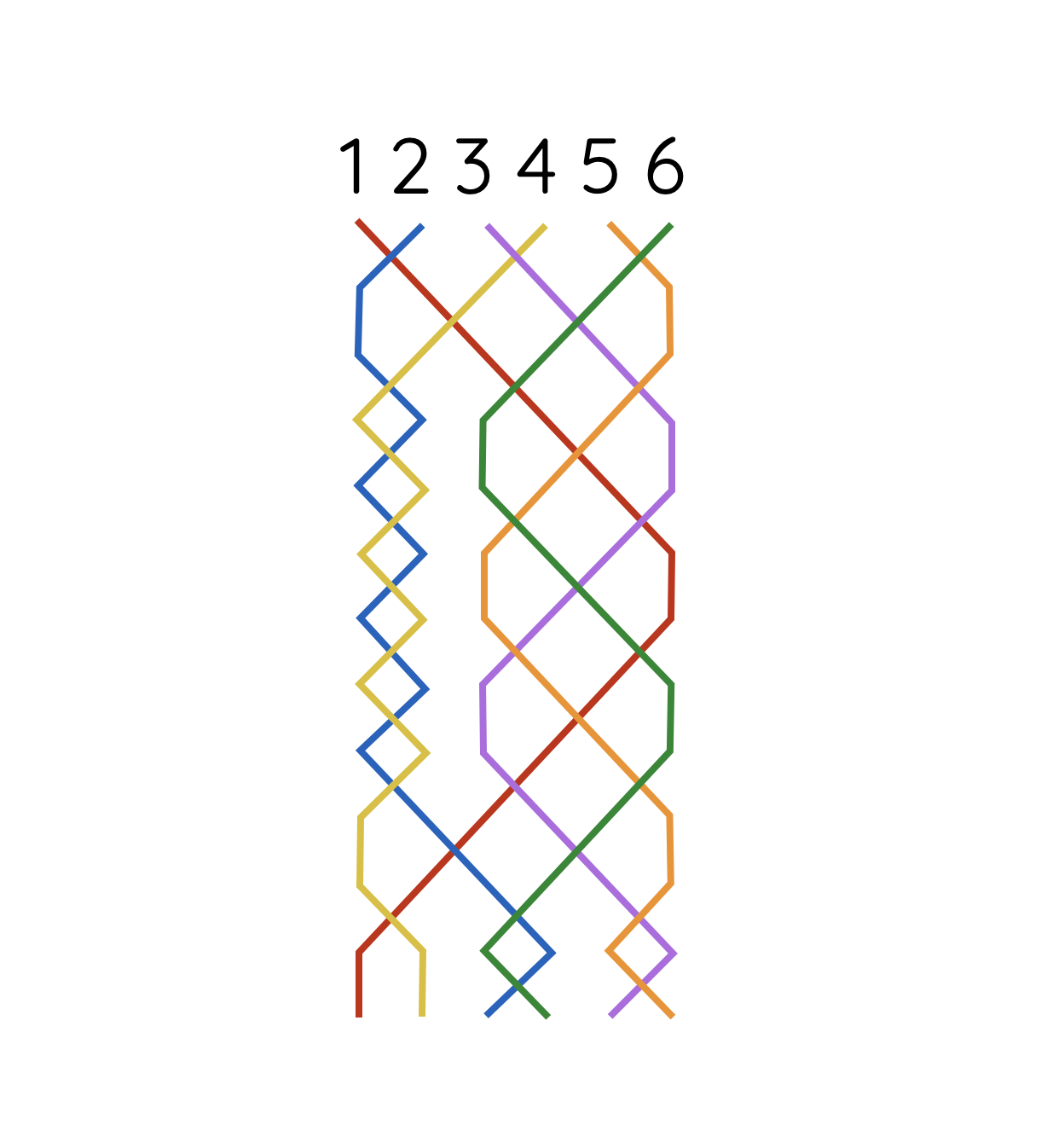
St Simon's or St Clement's?
Because of a half hunt version (like Grandsire), St Simon’s is called St Clement’s College Bob when extended to even bells…
Like Plain Bob, the extension is simple…. we remove 4 blows behind and replace it with two extra items… 5-6 (up) and 6-5 (down).
You will see the front two bells are almost completely separate from the others (front work)… with one bell exiting just before the lead end and a new bell joining shortly after it.
For the treble… the bells out and back are different. The first two bells going up will also be the last two coming down, because they stay at the front. The other 3 will stay in pattern…. just like Plain Bob!
a, b, c, d, e, will be c, d, e, a, b.
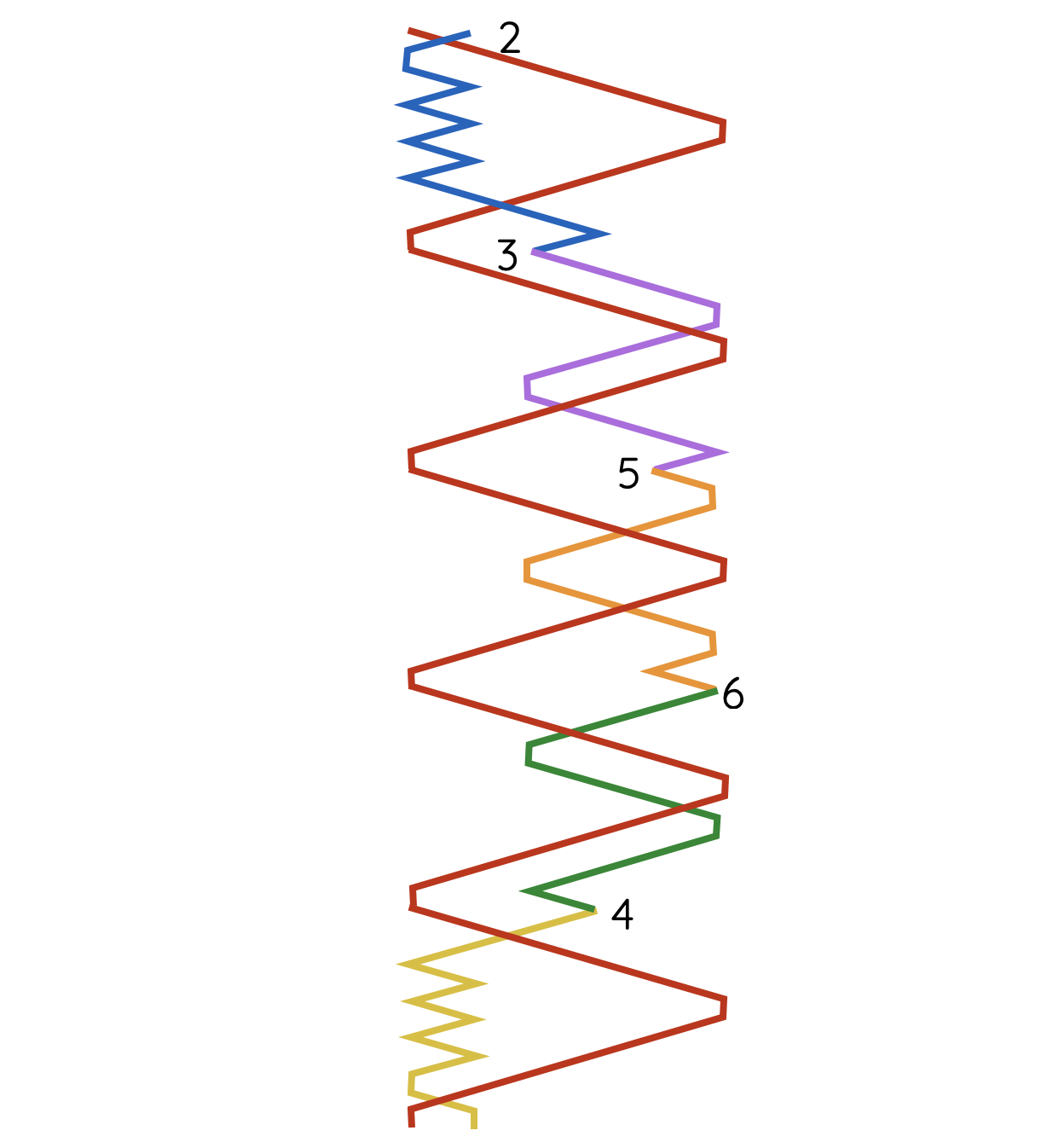
The Line
Like St Simon’s the work is done in the reverse order to Plain Bob… 3-4 (up), 5-6 (up), 6-5 (down), 4-3 (down), seconds.
This means the place bells are also the reverse of Plain Bob… 2, 3, 5, 6, 4… 2. However, the coursing order is still the same with 2 then 4, 6, 5 and 3 coming to the front… but only one new bell each lead and taking a whole course to complete the cycle!
The front work gains an extra dodge to allow time for three bells to cycle around the back-work.
The three leads at the back each include plain hunt from 3rd to 6ths and back.
The treble still hunts up and down and the rules for passing the treble are the same as Plain Bob.
Pass Treble 1-2, make seconds.
Pass Treble in 2-3, dodge 3-4 (up).
Pass Treble in 3-4, dodge 5-6 (up).
Pass Treble in 4-5, dodge 6-5 (down).
Pass Treble in 5-6, dodge 3-4 (down).
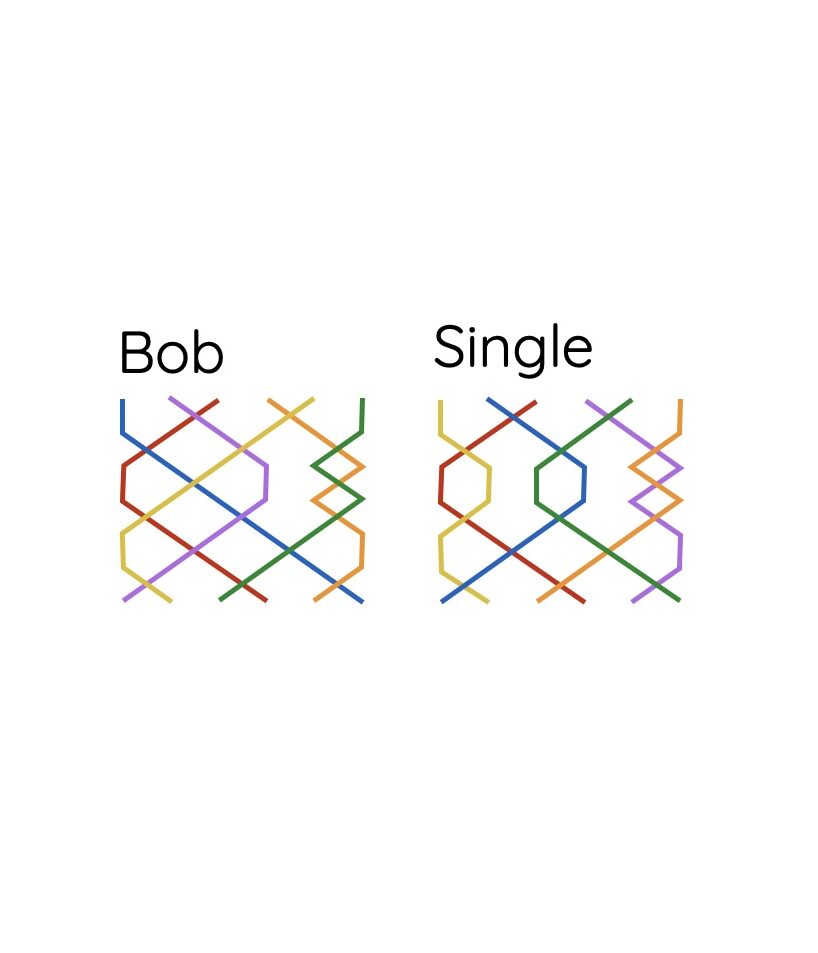
Bobs and Singles
Bobs are the same as Plain Bob.
Run in, (plain hunt instead of 4-3 down)… 2nds place bell.
Run Out (plain hunt instead of seconds)… 3rds place bell.
Make 4ths (the bob instead of 3-4 up). 4ths place bell.
All other bells are unaffected, no matter how many bells you add….
At a Single…
4th place bell makes seconds as normal (unaffected)
6th place bell makes 3rds (instead of 4-3 (down)). 3rds place bell (start the back work).
2nd place bell will make 4ths (the bob) and become 4th place bell (restart the front work)
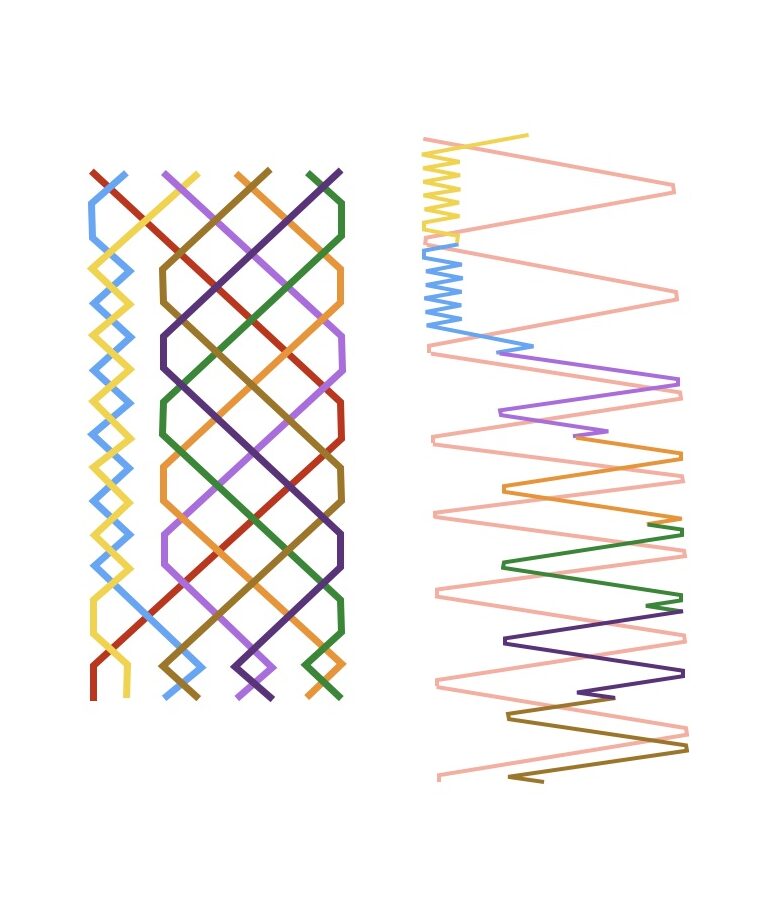
Higher Numbers..
Extending to higher numbers is very simple….
For each extra bell added, another dodge must also be added to the front work… this is one dodge for each of the back work bells… so Major requires 5 dodges each way, Royal would require 7!
The back work bells always hunt between 3rds and the back.
For each extra bell, an extra hunt up and down is required.
Just like Plain Bob major… dodges will be added in 7-8 (up) an 8-7 (down)… and 9-10 (up) and 10-9 (down) in Royal.
Passing the treble is also exactly the same as Plain Bob.
For the treble, the coursing order moves just like Plain bob, except for the front two bells which are always first on the way up and last on the way down.
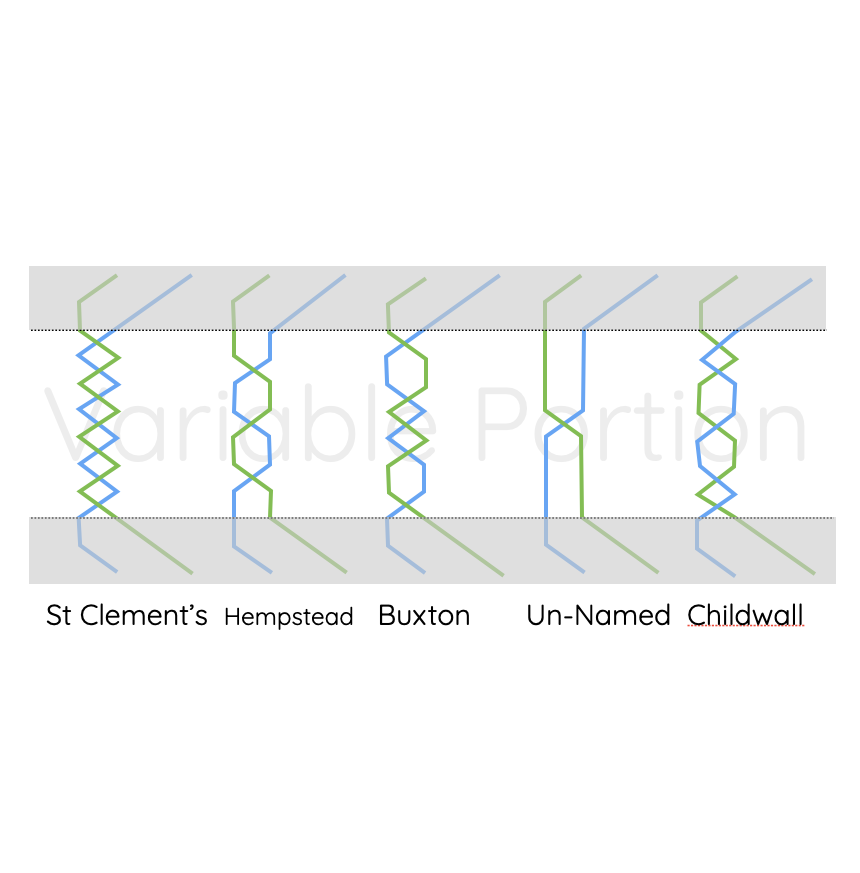
Alternative Front Works...
As well as ringing 3 dodges, it is possible to ring a number of alternatives…. adjacent are 4 more, but there are many others! Any even number of places will work… in any position…
So Hempstead is like St Martin’s and is all places… but it is different, because the incoming bell has to make seconds before leading… and the outgoing bell makes seconds on the way out!
Buxton is easier to ring because it adds a dodge between the places, so as to make them more natural to ring.
Childwall looks like a similar option… but note that both the lead and seconds in the middle are done wrong… i.e. back and hand.
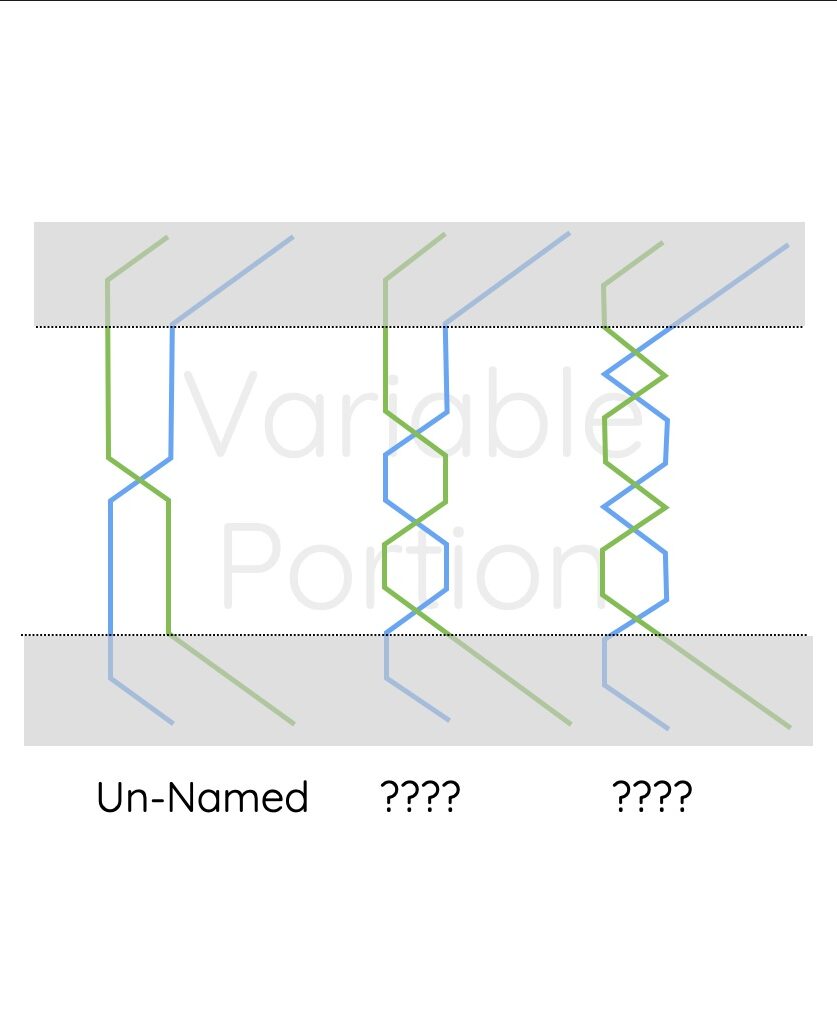
...and more?
There are lots more front-works you can try… and for every extra bell you add (e.g. St Clement’s Major, Royal, etc), the choice gets even greater!
- The first of this group is the simplest front- work of them all… but it is actually trickier than it appears because it has 5 blows leading, followed by 4 blows in seconds (back and hand)… and vice versa for the other bell.
As yet no one has bothered to ring this, so it does not have a name!
The last two examples are asymmetric so are perhaps less mainstream repertoire.
- The two front-work bells actually have different lines rather than one being the mirror of the other!
- …we have not managed to find out if these have names or not as they are not really recognised by the Central Council!

Touches
- A Bob course of St Clements is 60 changes.
- Alternate leads will produce 48 changes.
- A Bob every third lead will render 180 change.
- 2 Bobs every 3 leads will also render 180 changes.
- Calling Bob, single, plain twice will provide 95 changes and is false… but lots of fun for a practice night.

False but Fun...!
Finding different alternatives to the most basic touches can be a problem for practice night… so why not ring something you would not be allowed to do in a performance…. A false touch…!
- Bob wrong, make the single single home will produce 143 changes.
- Then there are combinations of Bob, Single twice…
Bob, single, 3 misses, Bob, single… will render 95 changes.
Bob, single, 2 misses, Bob, single, 3 misses, will render 131 changes.
- Bob, single miss, Bob Single will render 83.
